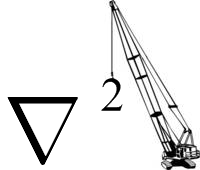Subphylum Myriapoda
Myriapoda contains millipedes, centipedes, pauropods, and symphylans. The group contains 13,000 species, all of which are terrestrial. They range from having over 750 legs to having fewer than ten legs. They have a single pair of antennae, uniramous (unbranched) appendages, and simple eyes. Myriapods are most abundant in moist forests, where they fulfill an important role in breaking down decaying plant material, although a few live in grasslands, semi-arid habitats or even deserts. The majority are herbivorous, with the exception of centipedes, which are chiefly nocturnal predators. Pauropodans and symphylans are small, sometimes microscopic animals that resemble centipedes superficially and live in soils. Millipedes differ from the other groups in having their body segments fused into pairs, giving the appearance that each segment bears two pairs of legs, while the other three groups have a single pair of legs on each body segment.
Class Chilopoda

The centipedes are elongate, flattened animals with 15 or more pairs of legs. Each body segment bears a single pair of legs. The last two pairs are directed backward and often differ in form from the other pairs. The antennae consist of 14 or more segments. The genital openings are at the posterior end of the body, usually on the next to last segment. Eyes may be present or absent; if present, they usually consist of numerous ommatidia. The head bears a pair of mandibles and two pairs of maxillae. The second pair of maxillae may be somewhat leg-like in form or short with basal segments of the two maxillae fused together. The appendages of the first body segment behind the head are claw-like and function as poison jaws.
Centipedes are found in a variety of places, but usually live in a protected situation such as in the soil, under bark, or in rotten logs. They are very active, fast-running animals and are predaceous. They feed on insects, spiders, and other small animals. All centipedes paralyze their prey with poison jaws. The smaller centipedes of the North are harmless to people, but the larger ones of the South and the tropics can inflict a painful bite. Centipedes overwinter as adults in protected situations and lay their eggs during summer. The eggs are usually sticky and become covered in soil, and are deposited singly. In some species the male may eat the egg before the female can cover it with soil. Some centipedes produce silk, which is used in mating. The male makes a small web in which he deposits a package of sperm, and this package is then picked up by the female.
Order Lithobiomorpha
Stone centipedes are short-legged, usually brown centipedes with 15 pairs of legs in the adults. They vary in length from about 4 to 45 mm. Some members of this order are quite common, usually occurring under stoned or logs, under bark, and in similar situations. When disturbed, they sometimes use their posterior legs to throw droplets of a sticky material at their attacker.
- Family Lithobiidae - 10-45 mm in length. At least some legs with strong spines, and the eyes usually consisting of many facets.
Order Scolopendromorpha
These tropical centipedes are the more primitive of the Epimorpha, and comprise 21 or more segments with the same number of paired legs. Their antennae have 17 or more segments. Their eyes will have at least 4 facets on each side.
- Family Scolopendridae - Can reach 150 mm in length. Eyes consist of four facets. May be quite venomous.
Under Construction
